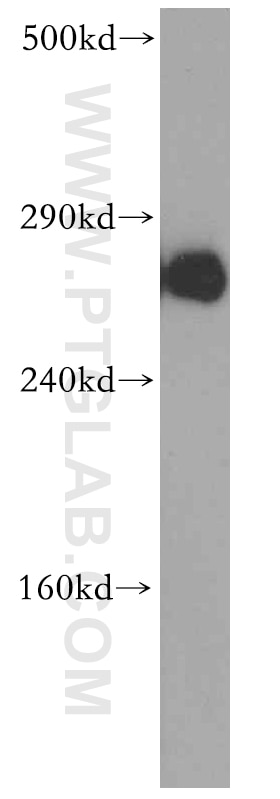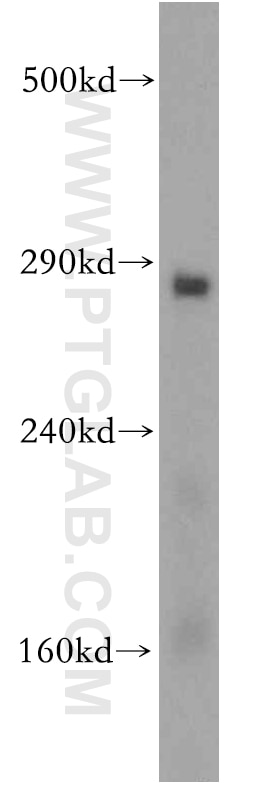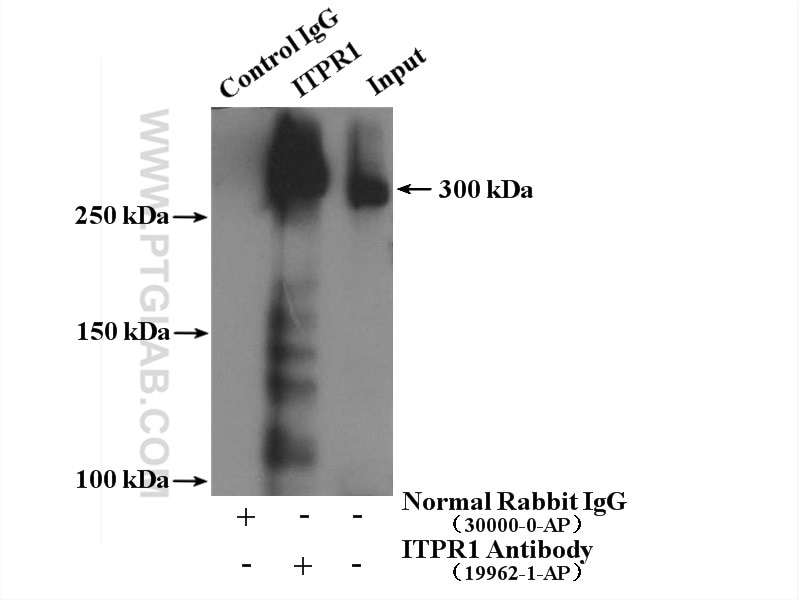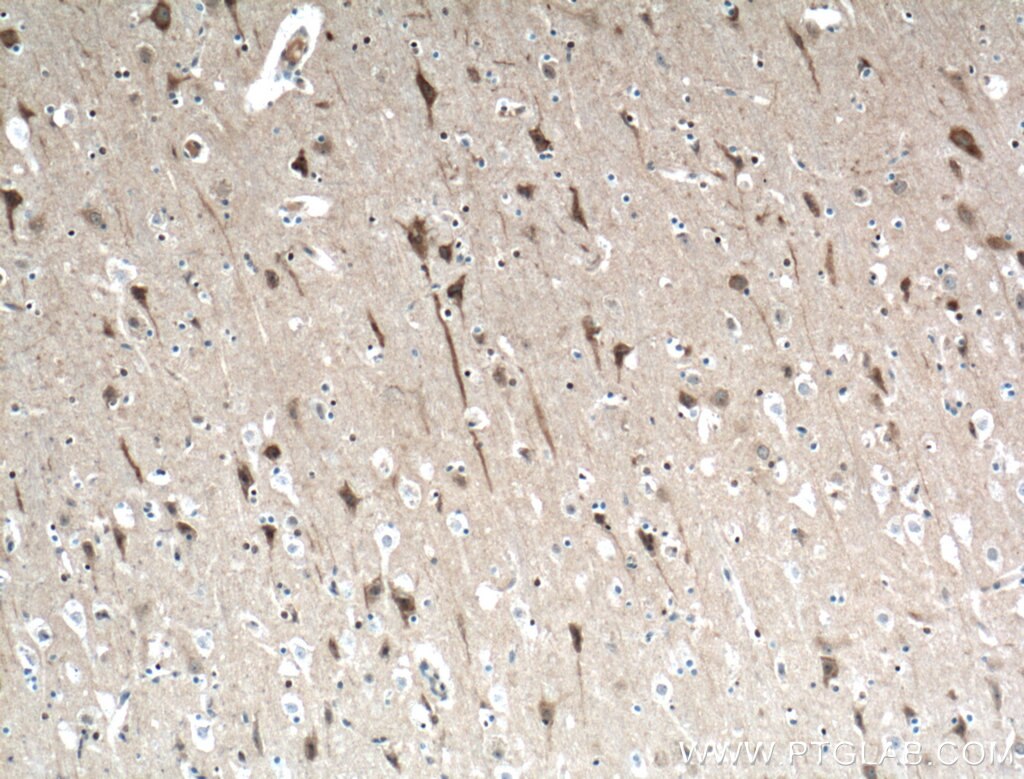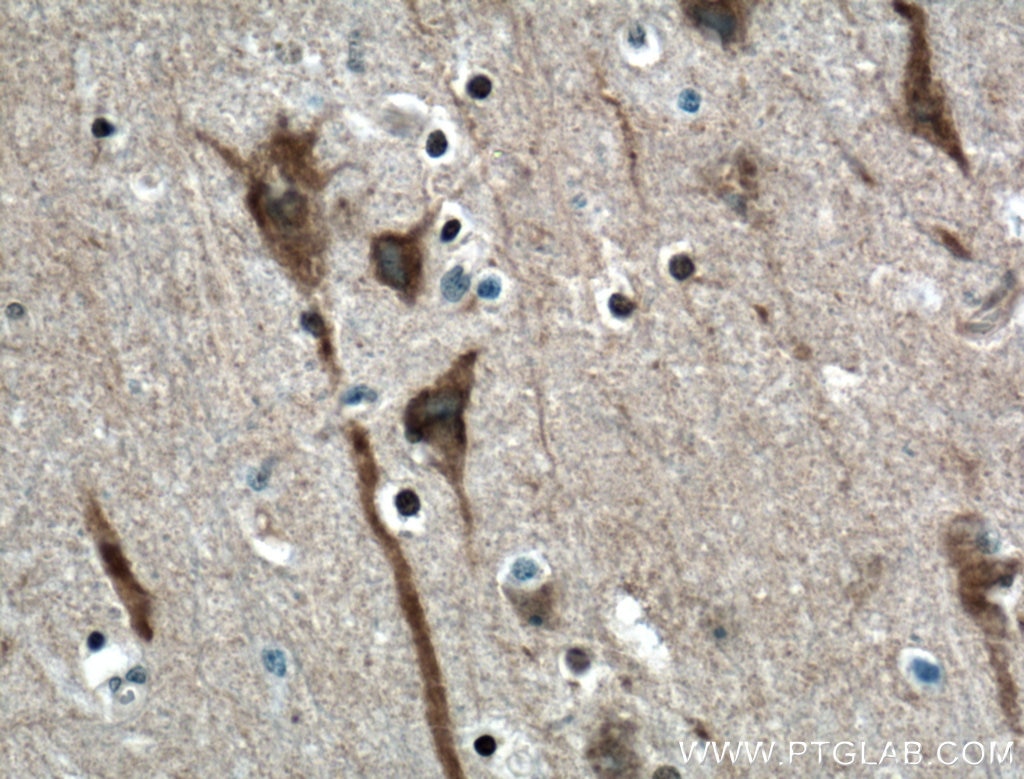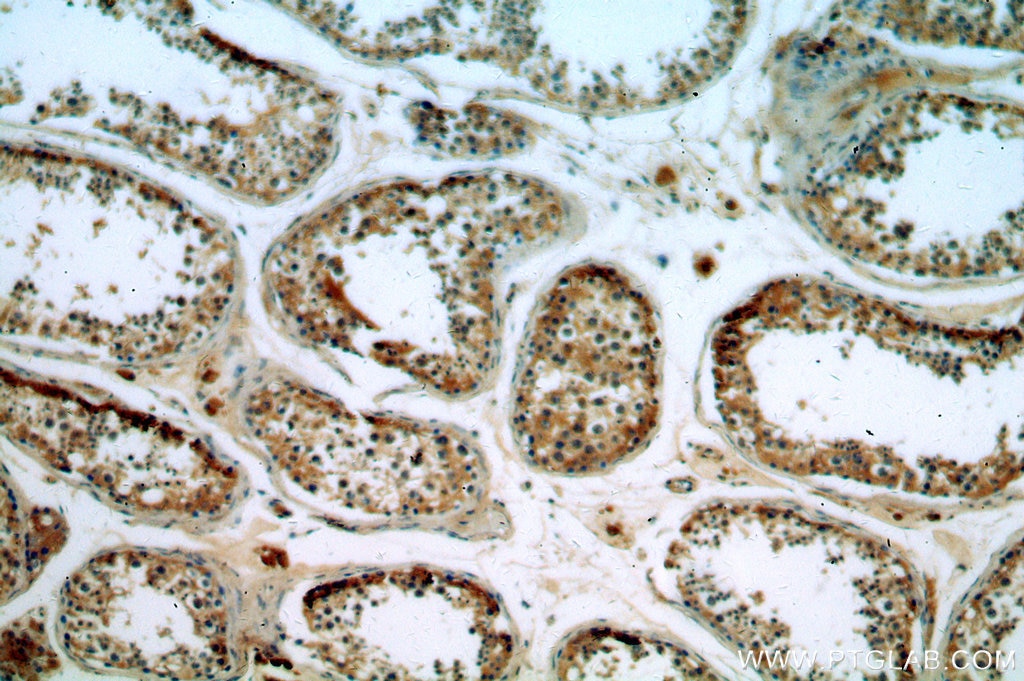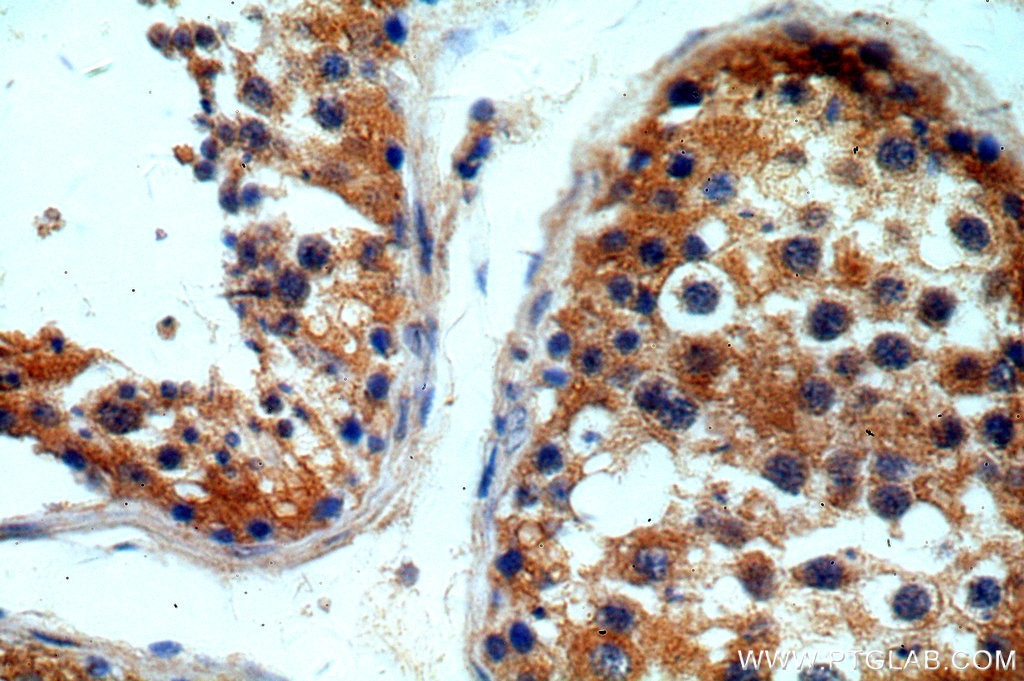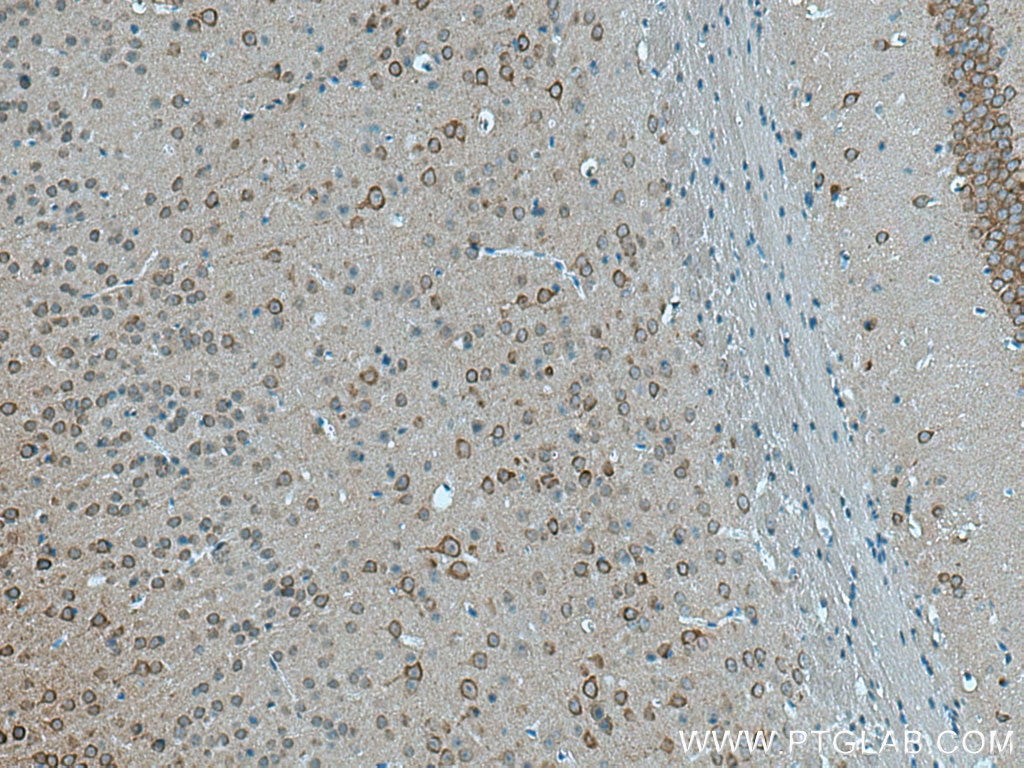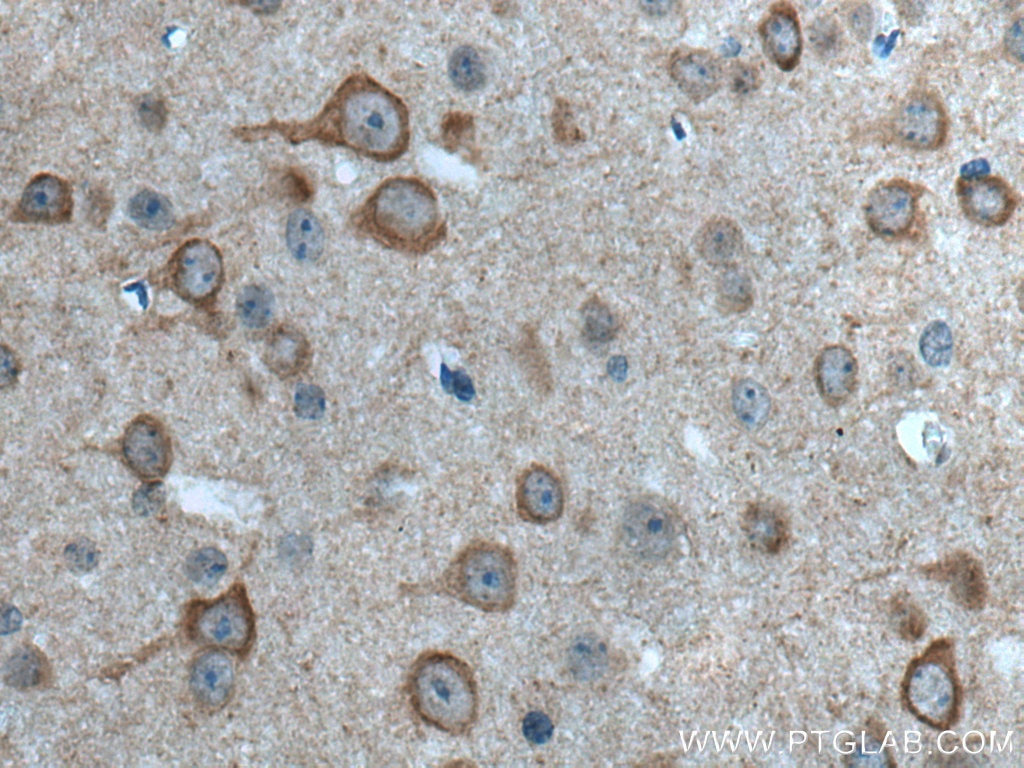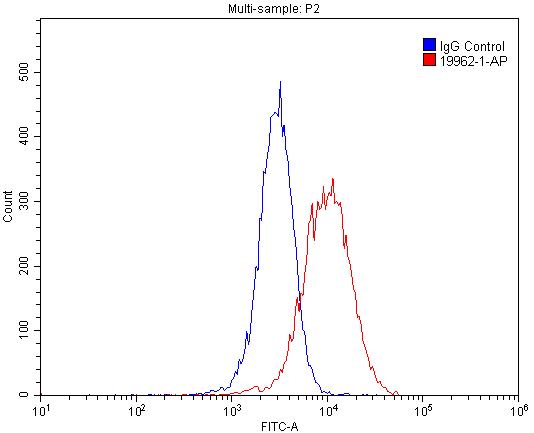Anticorps Polyclonal de lapin anti-ITPR1-specific
ITPR1-specific Polyclonal Antibody for WB, IP, IHC, ELISA, FC (Intra)
Hôte / Isotype
Lapin / IgG
Réactivité testée
Humain, rat, souris et plus (2)
Applications
WB, IP, IHC, ELISA, FC (Intra)
Conjugaison
Non conjugué
N° de cat : 19962-1-AP
Synonymes
Galerie de données de validation
Applications testées
| Résultats positifs en WB | tissu cérébral de souris, tissu hépatique de souris |
| Résultats positifs en IP | tissu cérébral de souris, |
| Résultats positifs en IHC | tissu cérébral humain, tissu cérébral de souris, tissu testiculaire humain il est suggéré de démasquer l'antigène avec un tampon de TE buffer pH 9.0; (*) À défaut, 'le démasquage de l'antigène peut être 'effectué avec un tampon citrate pH 6,0. |
| Résultats positifs en FC (Intra) | cellules HepG2, |
Dilution recommandée
| Application | Dilution |
|---|---|
| Western Blot (WB) | WB : 1:200-1:1000 |
| Immunoprécipitation (IP) | IP : 0.5-4.0 ug for 1.0-3.0 mg of total protein lysate |
| Immunohistochimie (IHC) | IHC : 1:50-1:500 |
| Flow Cytometry (FC) (INTRA) | FC (INTRA) : 0.20 ug per 10^6 cells in a 100 µl suspension |
| It is recommended that this reagent should be titrated in each testing system to obtain optimal results. | |
| Sample-dependent, check data in validation data gallery | |
Applications publiées
| WB | See 20 publications below |
| IHC | See 2 publications below |
| IP | See 1 publications below |
Informations sur le produit
19962-1-AP cible ITPR1-specific dans les applications de WB, IP, IHC, ELISA, FC (Intra) et montre une réactivité avec des échantillons Humain, rat, souris
| Réactivité | Humain, rat, souris |
| Réactivité citée | rat, Humain, poulet, souris, duck |
| Hôte / Isotype | Lapin / IgG |
| Clonalité | Polyclonal |
| Type | Anticorps |
| Immunogène | Peptide |
| Nom complet | inositol 1,4,5-triphosphate receptor, type 1 |
| Masse moléculaire calculée | 314 kDa |
| Poids moléculaire observé | 290-300 kDa |
| Numéro d’acquisition GenBank | NM_001099952 |
| Symbole du gène | ITPR1 |
| Identification du gène (NCBI) | 3708 |
| Conjugaison | Non conjugué |
| Forme | Liquide |
| Méthode de purification | Purification par affinité contre l'antigène |
| Tampon de stockage | PBS avec azoture de sodium à 0,02 % et glycérol à 50 % pH 7,3 |
| Conditions de stockage | Stocker à -20°C. Stable pendant un an après l'expédition. L'aliquotage n'est pas nécessaire pour le stockage à -20oC Les 20ul contiennent 0,1% de BSA. |
Informations générales
ITPR1, also named as INSP3R1 and IP3R, belongs to the InsP3 receptor family. It is a receptor for inositol 1,4,5-trisphosphate which is a second messenger that mediates the release of intracellular calcium. Defects in ITPR1 are the cause of spinocerebellar ataxia type 15 (SCA15). The antibody has no cross reaction with ITPR2 and ITPR3.
Protocole
| Product Specific Protocols | |
|---|---|
| WB protocol for ITPR1-specific antibody 19962-1-AP | Download protocol |
| IHC protocol for ITPR1-specific antibody 19962-1-AP | Download protocol |
| IP protocol for ITPR1-specific antibody 19962-1-AP | Download protocol |
| FC protocol for ITPR1-specific antibody 19962-1-AP | Download protocol |
| Standard Protocols | |
|---|---|
| Click here to view our Standard Protocols |
Publications
| Species | Application | Title |
|---|---|---|
Neuron Nicotinamide Pathway-Dependent Sirt1 Activation Restores Calcium Homeostasis to Achieve Neuroprotection in Spinocerebellar Ataxia Type 7. | ||
Mol Psychiatry A recurrent SHANK1 mutation implicated in autism spectrum disorder causes autistic-like core behaviors in mice via downregulation of mGluR1-IP3R1-calcium signaling. | ||
Diabetes PACS-2 Ameliorates Tubular Injury by Facilitating Endoplasmic Reticulum-Mitochondria Contact and Mitophagy in Diabetic Nephropathy. | ||
Cancer Lett MORTALIN-Ca2+ axis drives innate rituximab resistance in diffuse large B-cell lymphoma. | ||
Mol Nutr Food Res Sulforaphane Balances Ca2+ Homeostasis Injured by Excessive Fat via Mitochondria-Associated Membrane (MAM). | ||
Front Immunol Interleukin-6-Mediated-Ca2+ Handling Abnormalities Contributes to Atrial Fibrillation in Sterile Pericarditis Rats. |
